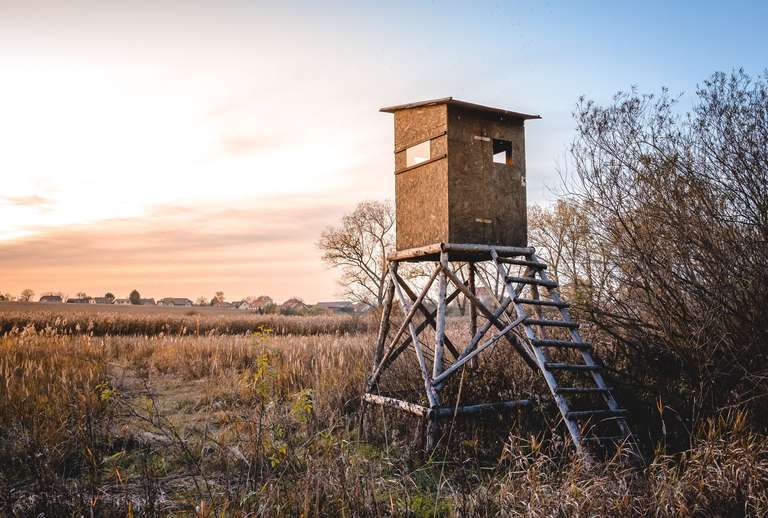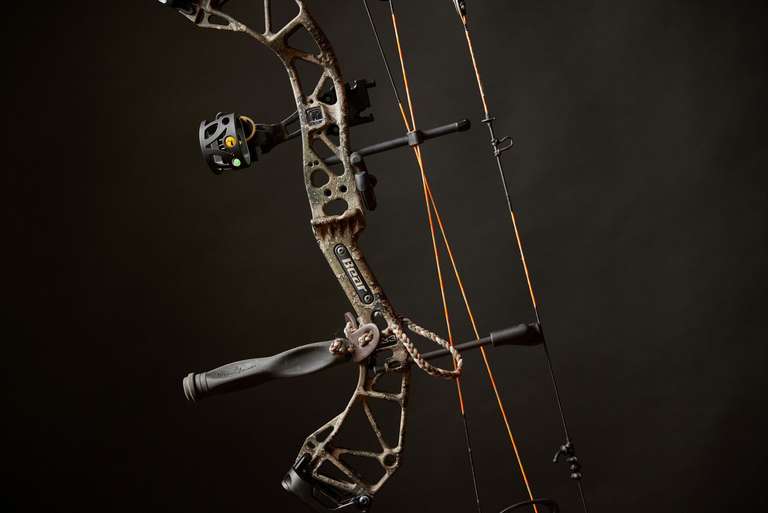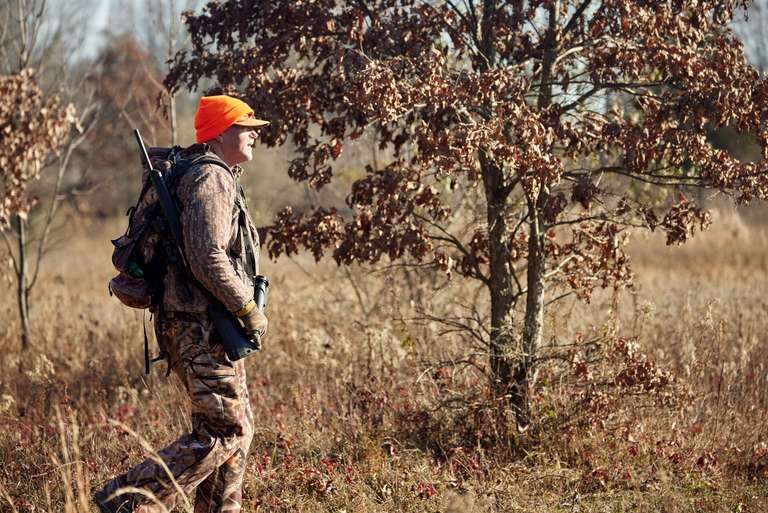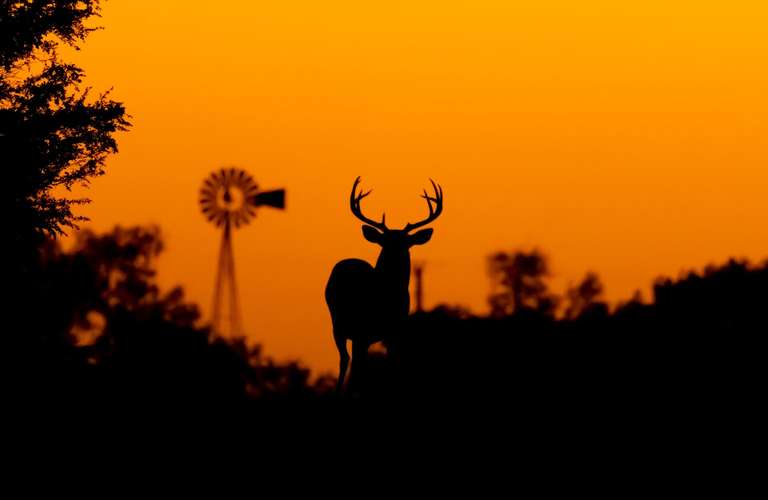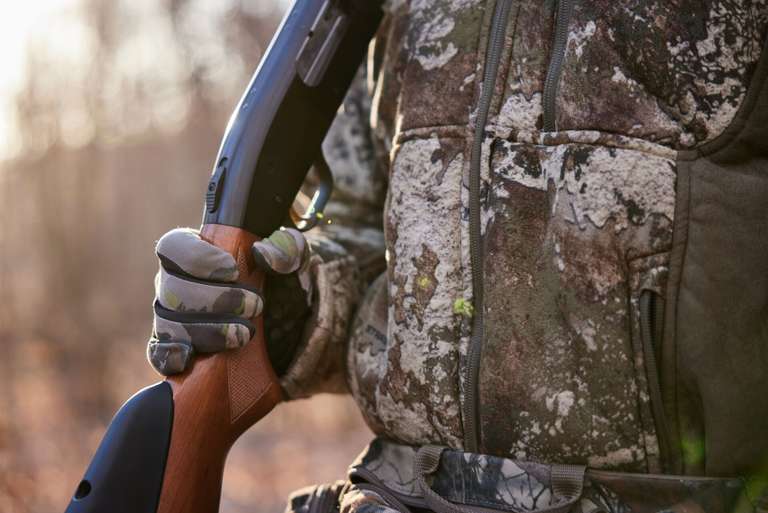Elevated Hunting: How to Use Ladder Stands
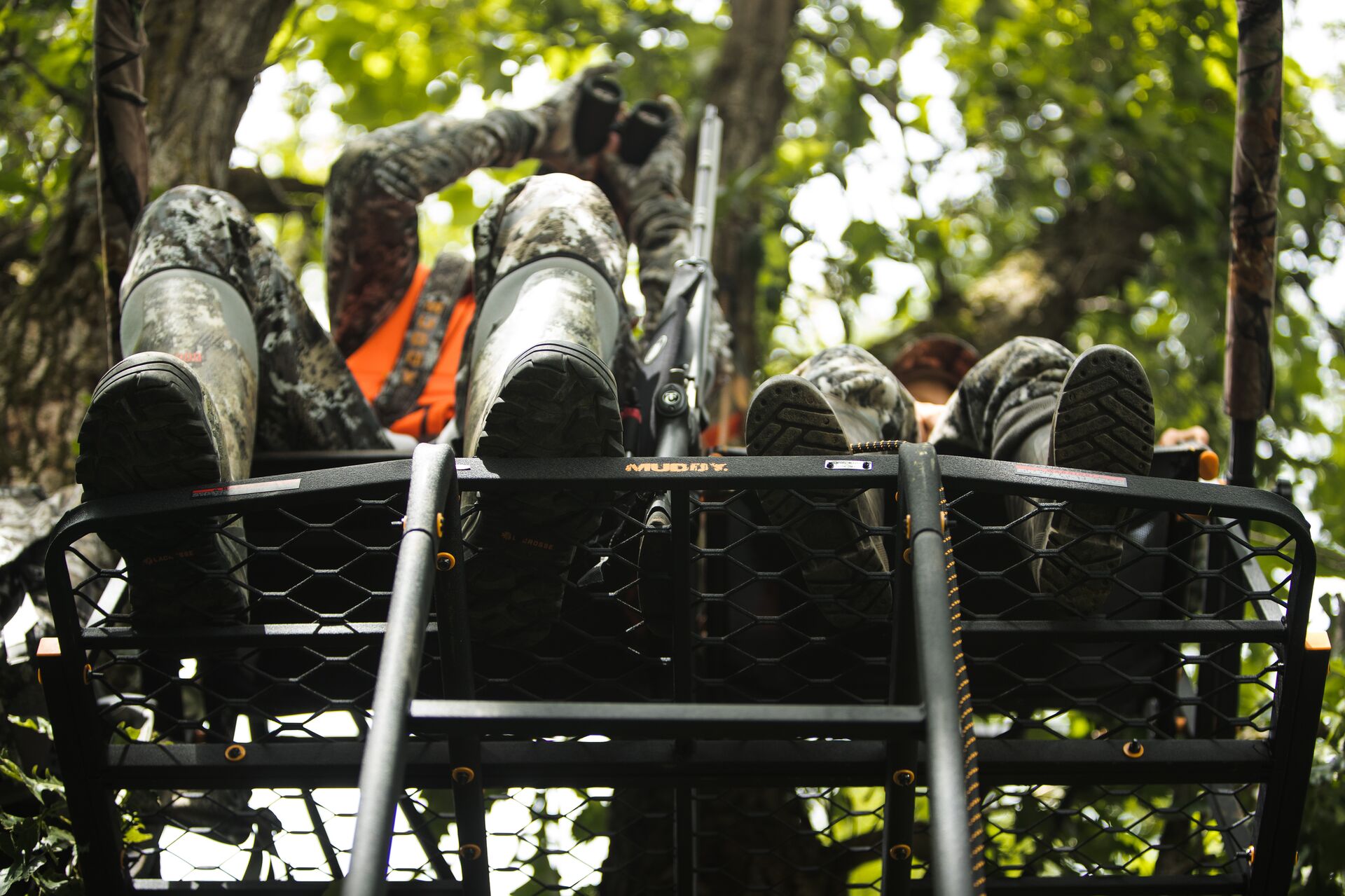
Ladder stands are the go-to choice for hunters seeking an elevated vantage point that offers good visibility and better scent control.
When used correctly and safely, ladder stands can boost your chances of a successful hunt by providing a stable platform and reducing the potential for deer to smell you in the area before you can get your shot off.
One of the most important safety principles we cover in our hunter education course is tree stand safety. So, let's go over the basics of ladder stands, from selecting the right one to setting it up safely.
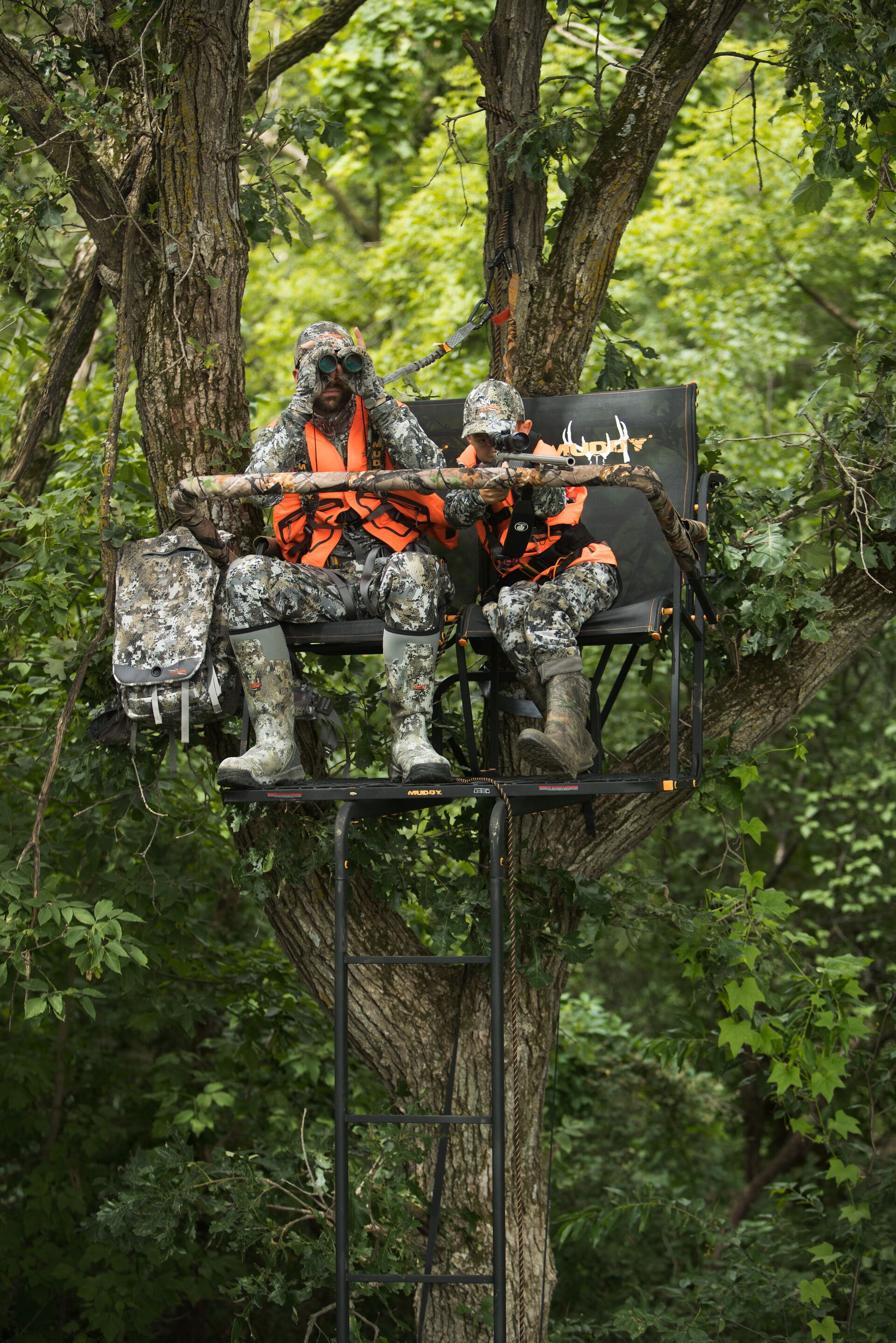
Types of Ladder Stands
This type of stand comes in two main types: single and double.
A single stand is ideal for solo hunters, offering a lightweight, easy-to-set-up option. However, some single stands are too small for larger hunters or hunters looking to keep a pack, cooler, or other things in the stand with them.
The older I get, the more I prefer double stands, but single stands do blend in better.
In contrast, double stands are designed for two people, providing more space but requiring more effort to set up. Material is essential when choosing a ladder stand — steel stands are durable but heavy, while aluminum stands are lighter but might cost more.
Features like padded seats, shooting rails, and spacious platforms can make long hunts more comfortable. Comfort is second only to location when I set up a new stand.
Selecting the Right Location for Your Stand
Choosing the perfect spot for your tree stand is essential for a successful hunt.
Start by identifying areas where deer travel, such as natural travel corridors, feeding zones, and bedding areas. Remember that deer pattern differently in the summer, so confirm your patterns as the season approaches.
Ladder Stand Location Tips
Here are a few ways to outsmart big bucks:
- Morning and Evening Activity: Deer are most active during dawn and dusk. Focus your scouting efforts during these times to observe patterns.
- Topography: Look for natural funnels, ridges, or water sources that deer might use as travel routes.
- Wind and Thermals: Always consider the wind direction when selecting your stand location. Position your stand downwind of expected deer movement to avoid detection.
Paying attention to natural cues will help you set up in a location that maximizes your chances of success. Topo maps, GPS, and cameras can help identify these locations and pattern bucks in the area, so use them to gain an advantage while scouting a spot to set up a stand.
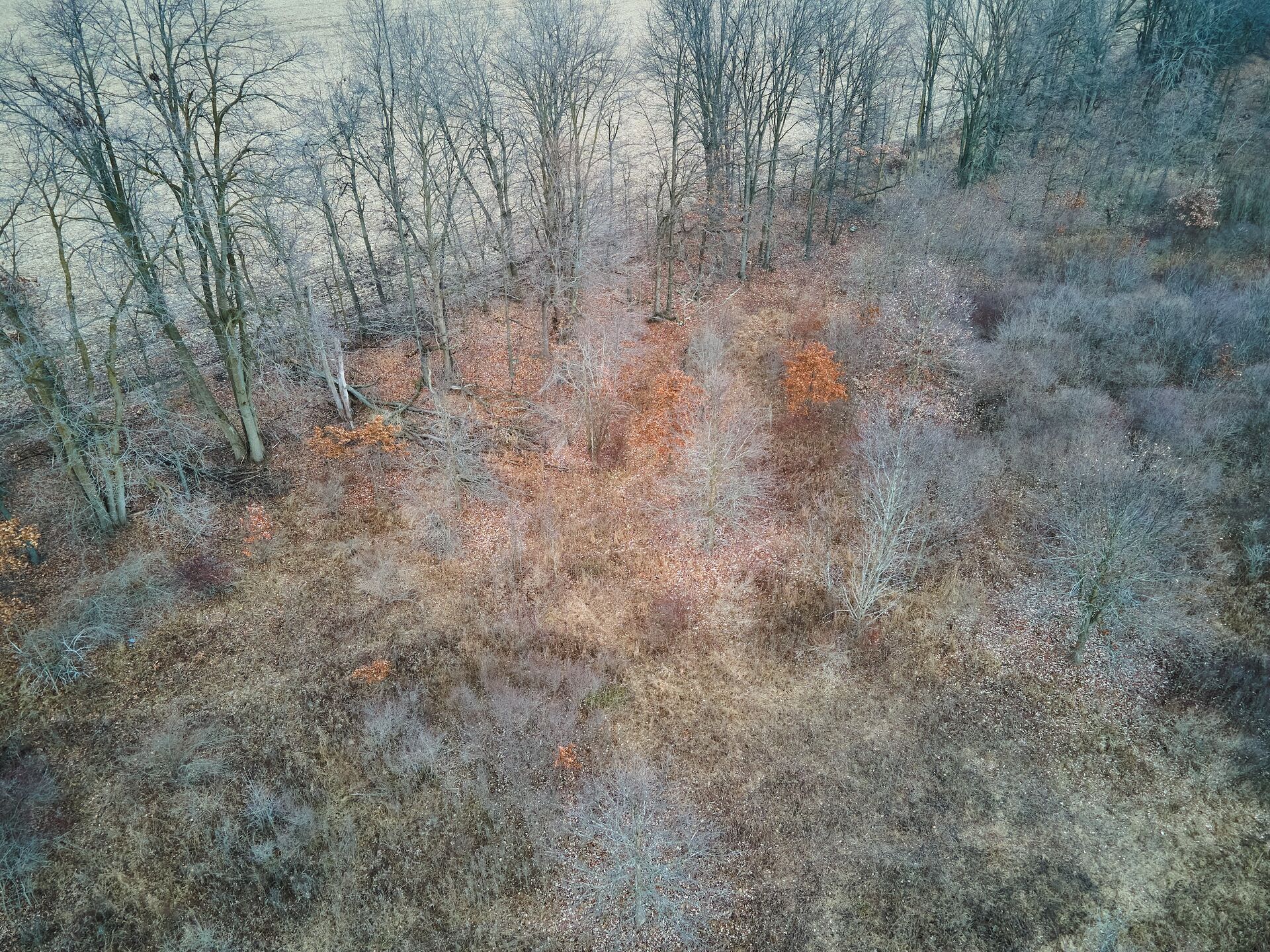
How to Set Up Your Ladder Stand
Setting up a ladder stand safely is a matter of planning and execution.
Here's a step-by-step guide:
- Assemble on Flat Ground: Start by assembling the ladder stand on flat, stable ground. Follow the manufacturer's instructions to ensure all parts are correctly connected.
- Select the Right Tree: Choose a sturdy tree that can support the weight and height of the ladder stand. Ensure the tree is healthy and the right size to use all the stand's straps and braces.
- Raise the Stand: With the help of a partner, carefully raise the ladder stand against the tree. Make sure the base of the ladder is secure.
- Secure the Stand: Use the provided straps and braces to secure the stand to the tree. Before climbing, double-check that all connections are tight and the stand is stable.
- Safety Precautions: Always wear a safety harness and attach yourself to a lifeline during setup. This precaution significantly reduces the risk of injury in case of a fall. Know how to avoid suspension trauma.
- Final Inspection: Conduct a final inspection before climbing to ensure the stand is securely attached and all safety measures are in place. Make sure the ladder is at the correct angle, and check for any wobbles or bends.
That's how you ensure your stand is safe and secure. Now, let's go over how to use the stand safely during a hunt.
Put Safety First
Safety is the most important thing to remember when using ladder stands.
Every year, thousands of hunters are injured in treestand accidents, and several have died. Most of these injuries are completely preventable.
Always wear a full-body harness connected to a lifeline when ascending, descending, or sitting in the stand. It bears repeating: Never climb a stand or sit in one without a harness.
Before each use, inspect the stand and its parts to confirm everything is secure and in good condition. Over time, weather and usage will weaken the straps and bolts, so make preseason maintenance part of your yearly ritual.
Avoid common safety mistakes, such as climbing with gear in your hands — use a drop line instead to pull up your firearm or bow after you're safely in the stand.
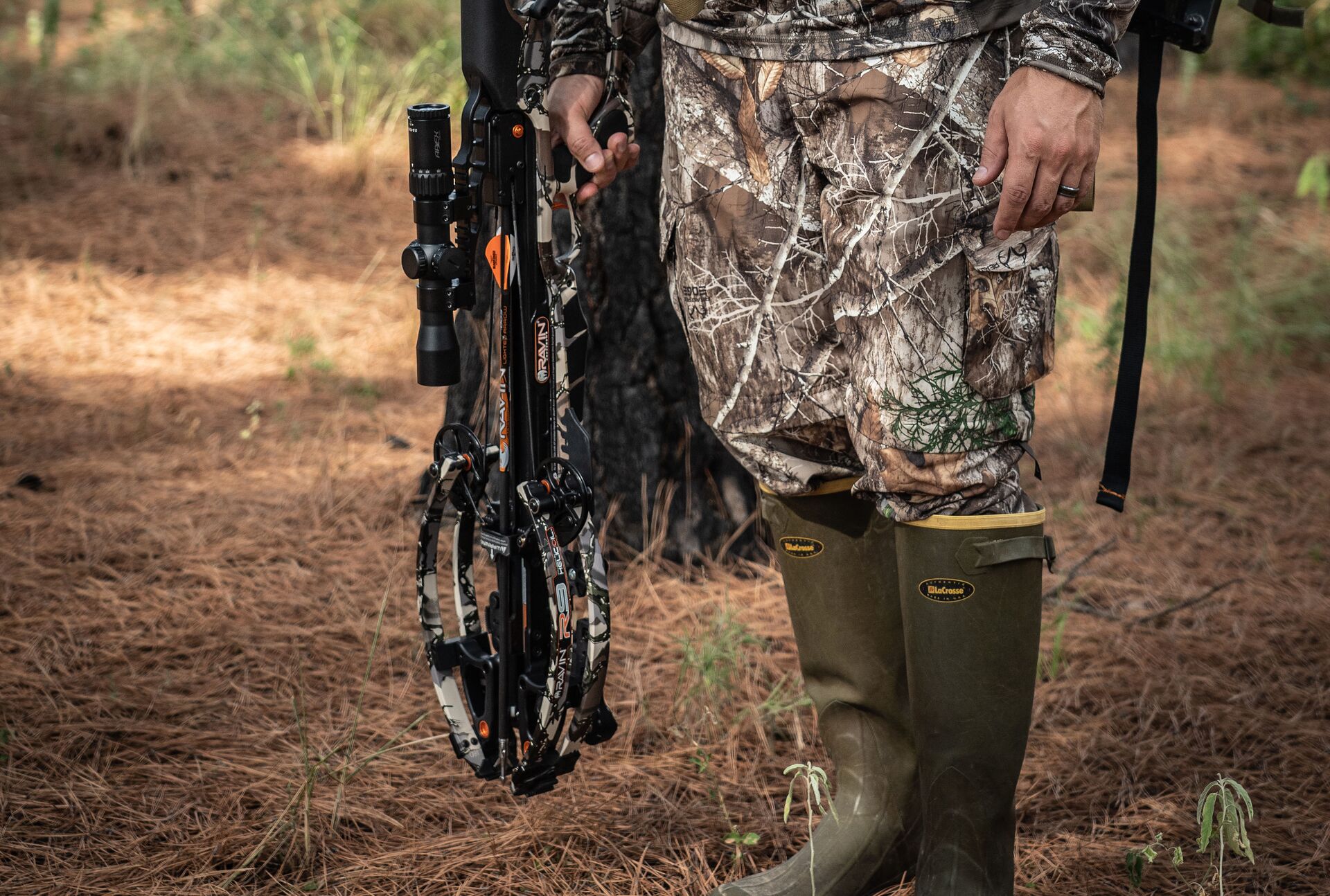
Maximizing Your Effectiveness
To get the most out of your ladder stand, consider camouflage and concealment.
Use natural-colored materials or add foliage to your ladder stand. Consider the season — use different camouflage patterns for different times of the year.
Entry and Exit Strategies
To avoid detection, always enter and exit your stand during low-light conditions. Plan your entry and exit routes to reduce noise and scent.
Remember, sitting a little too long is usually better than getting down too soon and spooking staging deer. The best times to hunt from a ladder stand are early morning and late afternoon when deer are most active.
Understanding the habits of mature bucks will increase your chances of a successful hunt.

Learn More About Hunting Safety (On and Off the Ground) With ilearntohunt
Ladder stands offer hunters a huge advantage, combining an elevated position with stability and safety. By selecting the right stand for your needs, setting it up correctly, and prioritizing safety, you'll have a better time in the field.
Whether you're hunting alone or with a partner, these tips will help ensure that your hunt from a ladder stand is safe and successful.
A hunter education course from ilearntohunt provides valuable hunting safety training to hunters of any skill level. The gamified course style is designed to help hunters of all ages improve their skills and stay safe in the field — whether you hunt on the ground or from an elevated position.
So, before your next hunt, learn everything you need to stay safe in the field. Choose the course for your state, and happy hunting!

